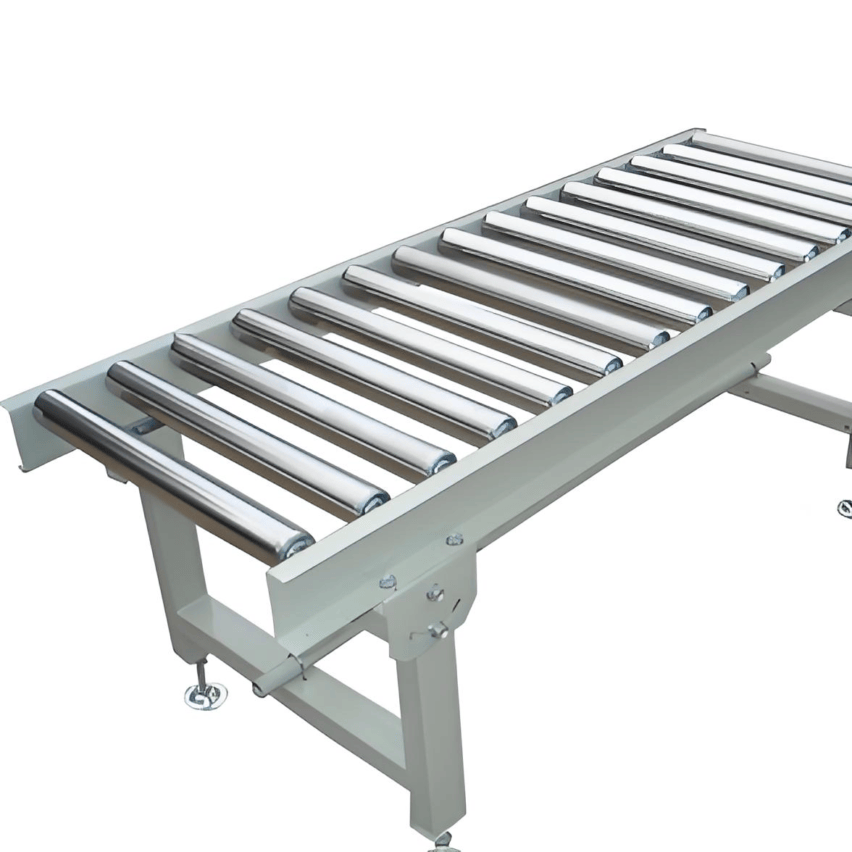Guess what? Every time I see a newbie choose the wrong motor power causing the drum line to stall and burn the motor, I want to rush over and yell, "Bro! Calculate the power of these three steps to understand, can less step on the 80% pit ah!" Today we will use the most vernacular way, hand in hand to disassemble the motor power calculation - to ensure that after reading you can also be done in three minutes!
Step 1: Understand how much "resistance" there is to overcome.
Many people come up to count the power, the result is even the load force is not calculated correctly, you say this can be accurate? We have to solve the core problem first.How much strength does it really take to push a load along on a roller line?
Here's a super simple formula:
Load force F = cargo weight × coefficient of friction × acceleration due to gravity
(in Newtons)
Take a chestnut 🌰:
- Cargo weight 50kg (common carton or small pallet)
- Friction coefficient 0.2 (stainless steel drum with cardboard box, refer to measured value)
- Gravitational acceleration is calculated as 10 (don't get hung up on 9.8, it's more practical to simplify the calculation)
→F = 50 × 0.2 × 10 = 100N
⚠️ Key details:
- Don't be fooled by the coefficient of friction!Stainless steel drum + dry carton take 0.15~0.2, wooden pallet take 0.3~0.4
- Slopes take extra effort!Increase in force of approximately 1.71 TP3T per 1° of slope
Step 2: Set the formula to calculate the power, the primary schools students can know
With load force, it's straight to the crudest power formula:
Theoretical power P₁ = F × V (in watts)
- F: Load force calculated in the previous step (in Newtons)
- V: Roller line speed (m/s)
Continue with the example just given:
- Velocity V = 0.5 m/s (medium speed)
- Load force F = 100N
→P₁ = 100 × 0.5 = 50W
👉 You may cry, "50W is enough? Did I lose out on the 200W I bought?"
Take it easy! It's just a theoretical value.The actual motor power must be amplified!
Step 3: Put in high power! This is the soul of selection
Why can't theoretical power be used directly? Three practical factors:
- transmission loss: Chains and gears are stealing power, and the efficiency η is usually only 0.6~0.8
- Start-up shock: 2~3 times force is required for motor start-up instantly
- safety margin: leave a bit of surplus to prevent overloading, after all, the motor burns more money!
✅Final power equation.
Real power P = (P₁ / η) × safety factor × condition factor
It's the same example as just now:
- P₁=50W
- Transmission efficiency η taken as 0.7 (common chain drive level)
- Factor of safety taken as 1.5 (generic guaranteed value)
- Working condition factor taken as 1.2 (add this for an 8-hour working day)
→P = (50 / 0.7) × 1.5 × 1.2 ≈ 154W
→ Directly select 150W or 180W motor!
📌 Coefficient selection mnemonic:
- safety factor: 1.2 for light load, 1.5~2 for heavy load/frequent start/stop.
- Working condition factor: 1.2 for 8 hours per day and 1.5 for 24 hours of operation.
- transmission efficiency: Gear drives > 0.9, chain drives ≈ 0.8, belt drives ≈ 0.7
📋 A guide to avoiding the pit: 3 common fatal mistakes newbies make
- Ignore start-up inertia:: "The motor burns as soon as you start it up, even though you've calculated enough power!" →Safety factor must include start-up shock
- Friction coefficient blind: Wooden pallets counted as cardboard boxes, and as a result the motor won't carry →It is safest to check the table by material
| Material combinations | Coefficient of friction ranges |
|—————-|————–|
| Stainless Steel-Dry Carton | 0.15~0.2 |
| Steel Drums - Wooden Pallets | 0.3~0.4 |
| Rubber-coated Rollers-Plastic Box | 0.25~0.35 | - play up efficiency as a matter of course: Take the P₁ and buy the motor straight away, it runs hot →η below 0.8 must be amplified
💡 On a personal note: don't let formulas trap your brain
After ten years of automation, I've seen too many people stick to the formula but ignore the site. Once the customer in accordance with the "standard process" calculated 200W motor, installed frozen with no movement - check and found that the drum bearing is not calibrated, the friction resistance doubled! So remember.The formula is the foundation, the field debugging is the high building..
It is recommended that you do so:
- Calculate the theoretical power by the three-step method
- Go for the bigger motor.(For example, if you figure 154W, you buy 200W.)
- No-load test machine touch temperature, warm hand acceptable, hot hand immediately shutdown
After all, saving $200 on the motor and burning it to pay $2000 in shutdown losses is an account that even a schoolboy can calculate, right?
(concluded)
The core formulas and parameters in this article come from mechanical design cases, motor selection guidelines, roller line maintenance reports, and real-world data from community technical discussions.













